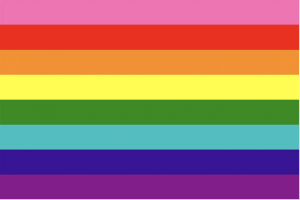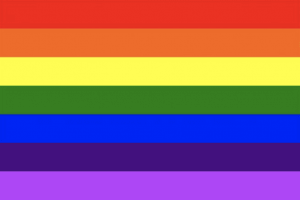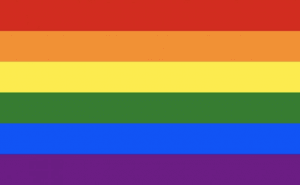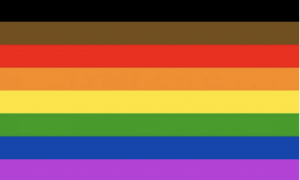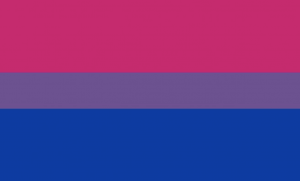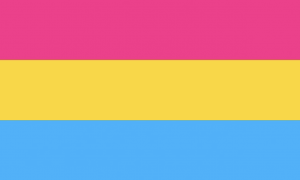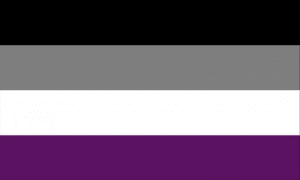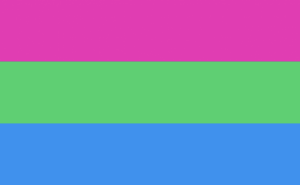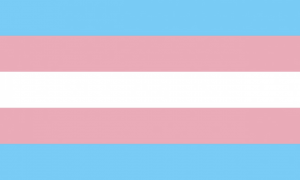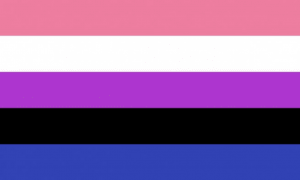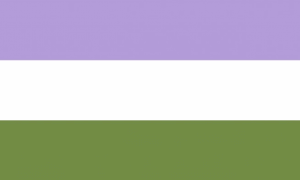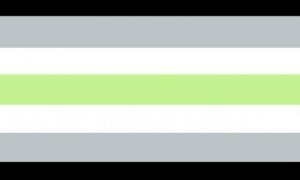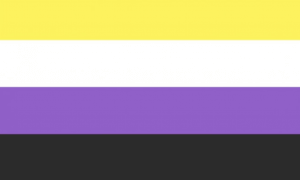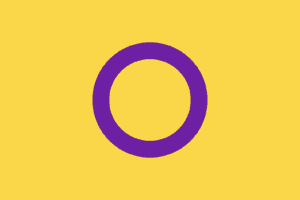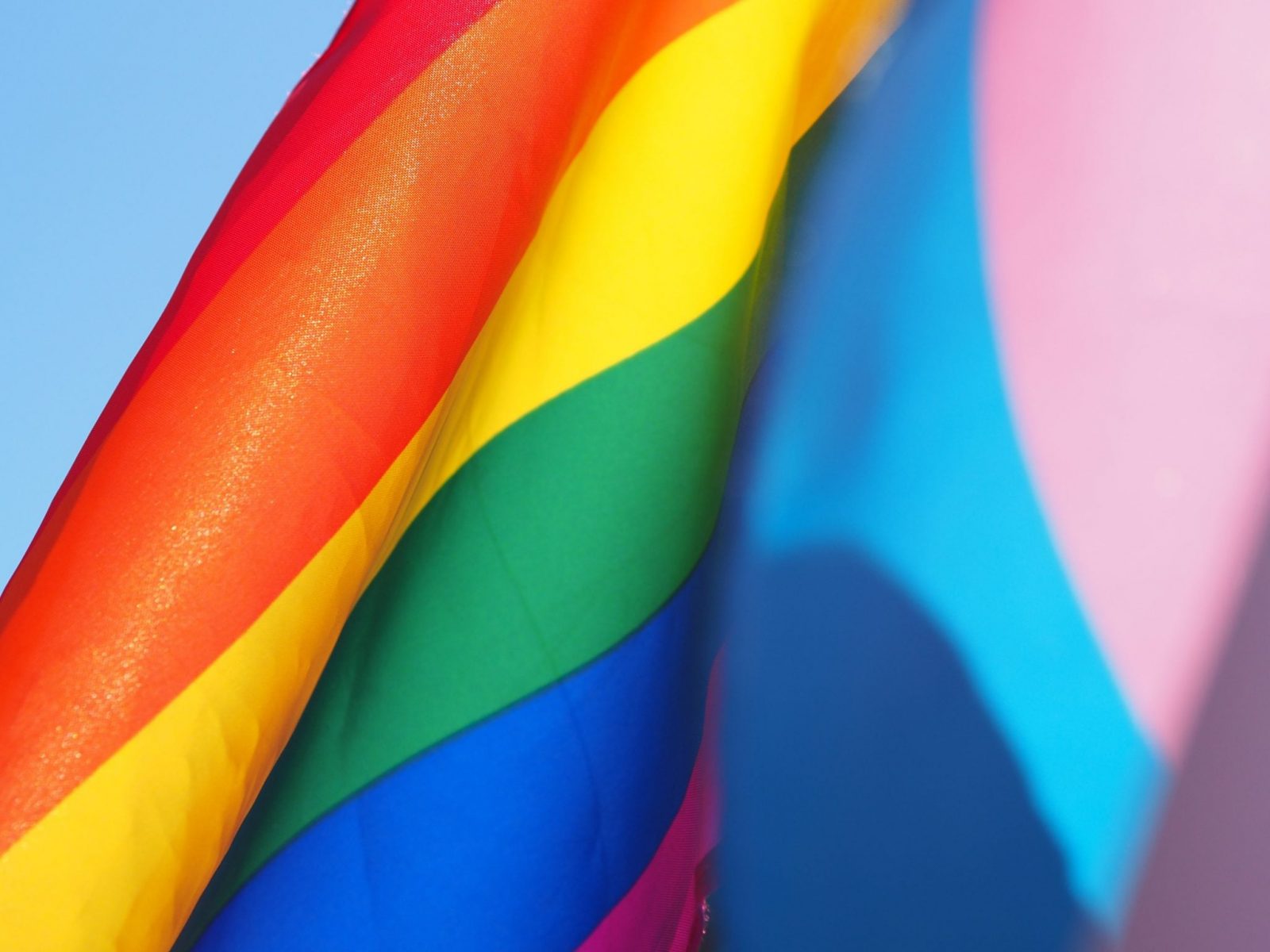
Revolutionary Flags of Queer Identity
April 22, 2019Content Sponsored by Pomegranate Studios
The most widely known and visible icon for the revolution of queer-identifying people is the six stripe rainbow Pride flag created by Gilbert Baker. However, the queer spectrum has broadened its inclusion of others which has enabled a wave of flags to become staples in their paths to equality.
The original Pride flag went through a few revisions before landing on the six colors: red for life, orange for healing, yellow for sunlight, green for nature, blue for harmony and purple for spirit. A recent update to the flag, in 2017, led to the addition of two more colors: black and brown to represent people of color within the LGBTQ+ community.
There are multiple other flags that focus on specific areas of queer identities, such as non-binary/gender identity, for the Transgender, Genderqueer, Intersex communities, and sexual identifiers, for the Asexual, Bisexual, and Pansexual communities.
As Pride season approaches, queer folks everywhere will soon be dusting off their rainbow-colored attire and be hitting streets with clever signs everywhere.
This yearly event serves as not only a celebration of what we have accomplished but also a celebration of queerness itself. Pride goes back decades and continues on a history that is not taught in high school.
After all, one of the most common item you will see stands for a lot more than just some colors on cloth. Pride flags serve a wide range of communities
Rainbow flag
In 1977, gay trailblazer and politician Harvey Milk asked Gilbert Baker to come up with a symbol that the queer community can come behind. The army veteran had helped sew banners for Milk but nothing like a symbol of pride. Nonetheless, Baker came up with the original rainbow flag that was inspired by Judy Garland’s “Over the Rainbow” and is now seen around the world as a symbol of Pride.
The original flag had more colors present, as some colored fabrics are costlier and harder to find. The most common flag seen has six colors on it, but the meaning remains. Still, the flag and its feeling of pride are very present throughout the world.
Each of the colors on the flag represents a part of pride with:
Hot pink = Sex
Red = Life
Orange = Healing
Yellow = Sunlight
Green = Nature
Turquoise = Magic/Art
Indigo = Serenity
Violet = Spirit
Transgender Pride Flag
Created in 1999 by trans woman Monica Helms, this flag was first seen at a pride parade in Phoenix, but has since become a staple of symbolism in the queer community.
Helms said “the light blue is the traditional color for baby boys, pink is for girls, and the white in the middle is for those who are transitioning, those who feel they have a neutral gender or no gender, and those who are intersexed,” Helms noted. “The pattern is such that no matter which way you fly it, it will always be correct. This symbolizes us trying to find correctness in our own lives.”
Bisexual Pride Flag
Designed by Michael Page in 1997, the flag symbolizes bisexuality through the overlapping of the stereotypical colors for boys and girls. The colors and inspiration come from the “biangles,” which were two overlapping colored triangles that were meant to represent bisexuality and pride.
The magenta represents homosexuality while the blue represents heterosexuality, with finally the lavender, which is a mixture of both the magenta and blue colors, representing attraction to both sexes.
Pansexual Pride Flag
Created on the interwebs during 2010, the pansexual pride flag was created to distinguish itself from bisexuality, which is commonly mixed up.
Since pansexual people are attracted to people regardless of their gender or sexuality, the colors on the flag to match that. The pansexual flag has three colored bars: pink, yellow, and blue. The blue represents those who identify as a male and pink represent those who identify as a female, both regardless of their biological sex. The yellow between the two represents non-binary attraction; such as androgynous, agender, bigender and genderfluid people.
Labrys Lesbian Pride Flag
One of the more obscure flags and the only pride flag with an ax in it, the labrys lesbian pride flag was created in 1999 by Sean Campbell, a gay graphic designer.
Meant to include everyone who loves women or female empowerment, this flag features a labrys, an ancient ax, inside of a black upside down triangle. The triangle was used on the flag, as lesbians who were put into concentration camps were forced to wear the symbol, along with gay men who wore a pink triangle, to let others know that they were “asocial” and didn’t conform to heterosexuality.
Asexual Pride Flag
Created in 2010, the asexual pride flag was inspired by the Asexual Visibility and Education Network logo and represents not only asexual people but includes graysexuals (the fluid area between sexuals and asexuals) and demisexuals (people who don’t experience sexual attraction unless they have an emotional connection with their partners.) as seen through the darker and more neutral colors.
Intersex Pride Flag
Created 2013 by Intersex International Australia, the flag features colors that aren’t associated with gender and features a lone circle to represent living outside the binary. The yellow is meant to be a neutral color instead of pink and blue, while the circle also represents wholeness.
